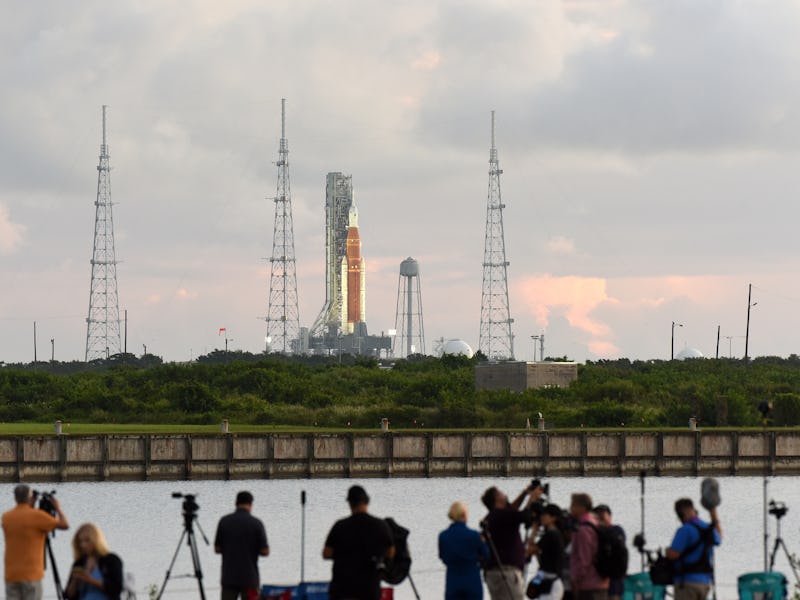NASA calls off Artemis I launch over engine cooling problem
The next potential launch window is September 2.

Artemis I — the first test flight of NASA’s massive Space Launch System — has had its first launch window, set for this morning, scrubbed. NASA’s launch director, Charlie Blackwell-Thompson, made the announcement just after the window opened this morning at 8:35 AM Eastern.
The huge orange Artemis and SLS are the culmination of the architecture and technology behind the Space Shuttle. Artemis’ engines are the same engines (called RS-25s) that lifted the Shuttle spacecraft into orbit, and the two solid rocket boosters along the side are repurposed from unused Shuttle boosters.
It is one of those RS-25s that gave the launch team trouble this morning, as engine 3 failed to cool to the same temperature as the others during routine conditioning of the engines that began at 6:03 AM. To prepare the engines for launch, the launch engineers “bleed” a relatively small amount of liquid hydrogen – stored at -423 F – out of the rocket’s propellant tanks into the engines to equalize their temperatures.
Initially, launch engineers paused the countdown for 10 minutes at T-minus 40 minutes to address the problem. When engine 3’s temperature could not be equalized with the others, the hold continued until two minutes after the launch window opened. At that point, the launch team closed today’s launch window.
Earlier in the launch process, engineers were also concerned with a crack in the core booster tank, which holds 730,000 gallons of propellant. The crack ended up being in the iconic orange foam, rather than the structure of the tank itself and did not impact the decision to scrub the launch for today.
During the proceedings, NASA launch commentator Derrol Nail noted that this was an issue that could not be examined during earlier “wet dress rehearsals” in June and July, and was the team’s first chance to try to address the issue. The next launch window for Artemis will be this Friday, September 2, at 12:48 PM Eastern.
That’s because Artemis I’s mission – an uncrewed voyage around the moon for the Orion capsule – would find it eclipsed by Earth’s shadow, and Orion would not be able to draw power from its solar panels.
This is only the latest in a series of delays that have pushed back Artemis’ first launch by some six years. When it was announced in 2011, initial expectations were for Artemis to fly first in 2016. Upon its eventual launch, it will be the first crew-capable rocket to visit the moon in nearly fifty years. The last crewed mission to the moon was Apollo 17, which left the lunar surface in December 1972.
At the moment, this does not impact NASA’s plans for Artemis to return for a crewed mission around the moon in 2024 or a moon landing mission in 2025. NASA announced the final 13 sites for Artemis III’s 2025 landing mission last week, all of which are clustered around the lunar south pole.
This article was originally published on